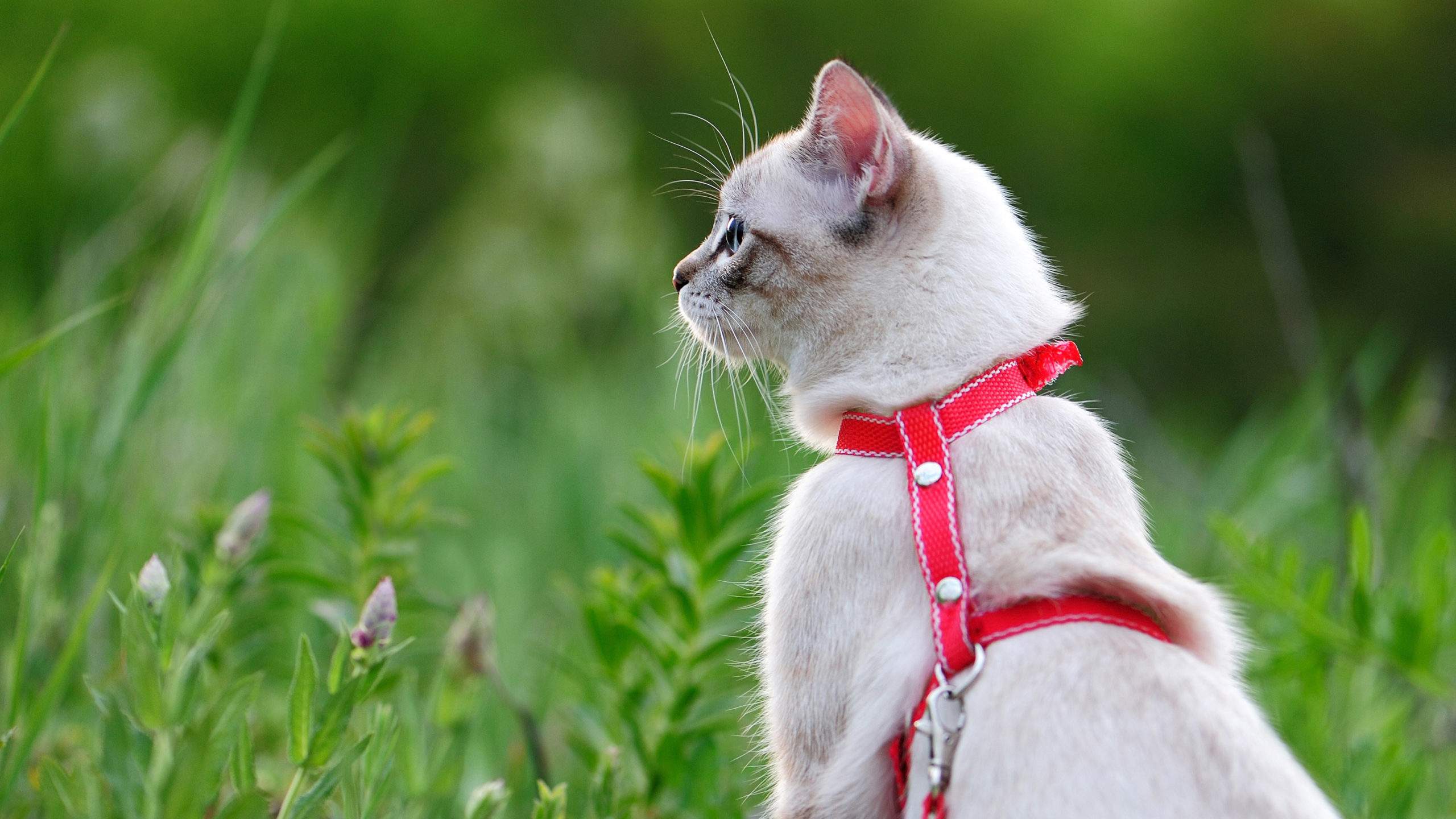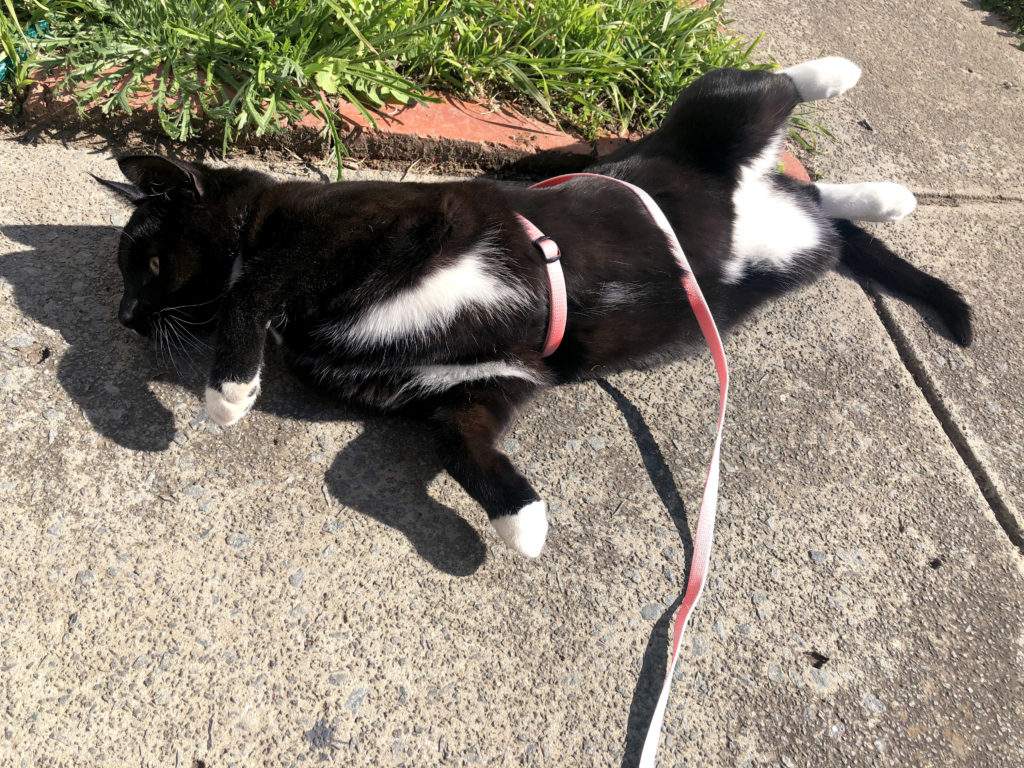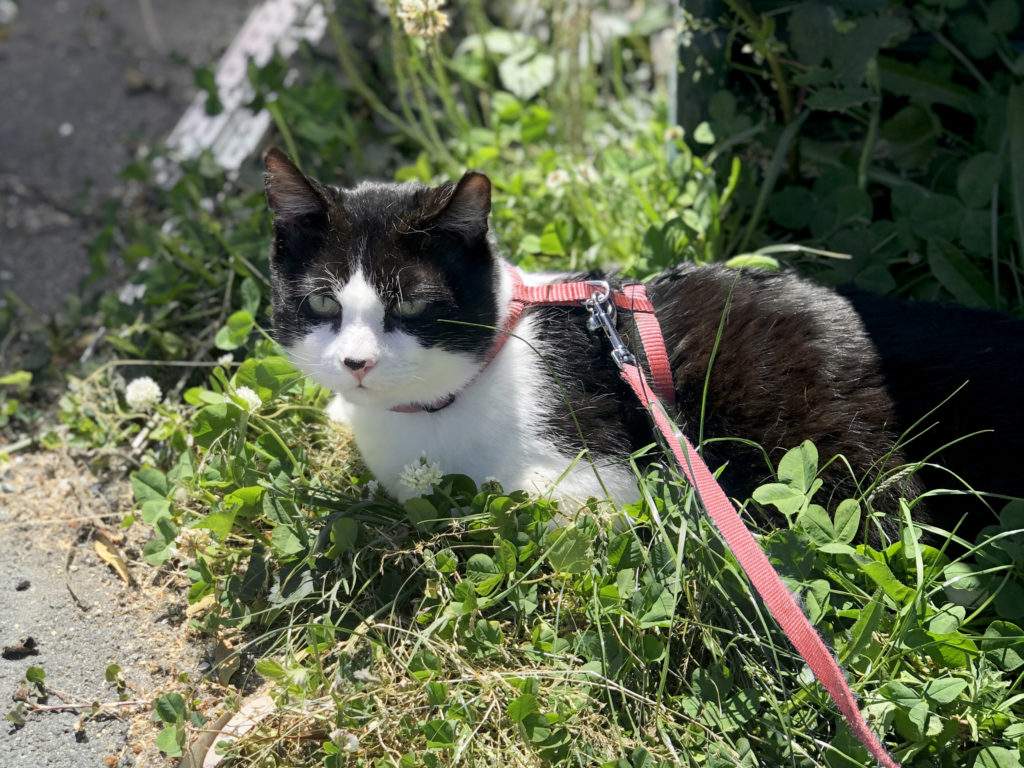Tips & Tricks for Harness Training

ARTICLE BY: Jen Pelham, Ten Lives
If your contained cat longs for the great outdoors, these harness training tips may be just what you need for a more content kitty!
Harness training can be an enriching experience for your cat. It can provide indoor cats with the opportunity to use their senses and stimulate their minds. However, it’s important to realise that it’s not for all cats. Just as some people are excited to snorkel, other people are terrified of the idea and would rather stay home… this is the same for cats and harness training.
Is harness training right for your cat?
Many cats are content to watch the neighbourhood from the comfort of a window, without the desire to explore outside. These cats normally avoid being near the front door and do not vocalise to get outside.
If your cat dashes for the door every time its opened, vocalises to go outside and or playtime does not seem to satisfy them entirely, then harness training might be a positive experience for your cat.
Steps to harness training:
Just as you wouldn’t stick a snorkel on your friend and dump them in the middle of the ocean for their first time, harness training your cat needs to be done slowly and with patience.
Getting your cat comfortable with the harness on its body.
This step is important and can take time. Start by placing the harness on the ground and allowing your cat to sniff it. Reward your cat with their favourite treat when they interact with the harness. Do this daily for short periods of time.
Over time we want your cat to be familiar with the harness and associate it with a positive reward. Then you can begin to place the harness on your cat. In the beginning your cat might be uncomfortable or panic as you touch its legs or attempt to place the harness around its body. If so, simply stop putting it on and place the harness on the ground, and allow your cat to sniff it (or in some cases run away from it). If your cat returns to the harness to sniff/investigate it – reward them with a treat. If your cat allows the harness to be put on – reward them with a treat and let them get used to the feeling of walking around the house with it on. In the early stages keep these sessions short, as you want to end on a positive note and not overwhelm them.
Progress gradually to longer and longer sessions, remembering to reward them. When your cat can walk around the house with the harness on comfortably (as if they didn’t have a harness on at all), then you can begin attaching the leash. As you did before, attach the leash for short periods and reward with a treat. Hold the leash loosely and follow your cat to where it wants to walk around the house. Do not pull or try to control the cat’s movements (unless for its own safety).
Ease them into each step slowly and keep up positive associations (head rubs and treats) to make this a positive experience. When your cat is relaxed walking around the house (with the leash attached and you following them), then you can proceed to going outside.
Walking a cat is very different to walking a dog.
Be prepared for a slow walk, that involves stopping to ‘smell the roses’ and watch birds rather than a long walk/jog that you would do with a dog. Harness walking with a cat involves following your cat and letting them decide what’s interesting.
Only make gentle corrections with the leash to discourage them away from small areas you can’t follow, or up trees. It’s a good idea to have treats handy and a cat wand toy to redirect their attention as needed.
Make your walks ritualized.
Setting a regular time for walks will help to prevent your cat from running to the door every time you do. You can also ritualise the location in which you place the harness on – such as a bedroom or other room that is located away from the front door. Leaving for harness walks through the back door may also help prevent your cat from thinking its time for a walk every time you open it. Use a regular phrase like ‘walkies’ and jiggle the leash as a signal that it’s time for a walk. If you cat doesn’t want to go for a walk some days – that’s ok, your cat has made a choice.
Safety when harness walking.
To begin with start in your own yard and avoid walking too far from your house in case your cat decides it has had enough. Be mindful of things that may scare your cat such as barking dogs, construction works/loud noises, and busy streets. Harness walking your cat should be fun and stimulating for your cat, they will be happy to explore near your house without needing to walk for kilometres.
Make sure the harness is fitted correctly, you should only be able to fit two fingers underneath. If its too loose they may slip out of it.
Treats
Whilst providing food rewards is beneficial for training, keep your cats daily allowance in mind to avoid overfeeding your cat. Cats who are less food motivated may be rewarded by head rubs or other interaction from you that they value highly.


Some cats adopted from Ten Lives receive harness training while at the Centre. Daffy (Left) and Levi (Right) both showed aptitude for harness training and were encouraged in the practice.

